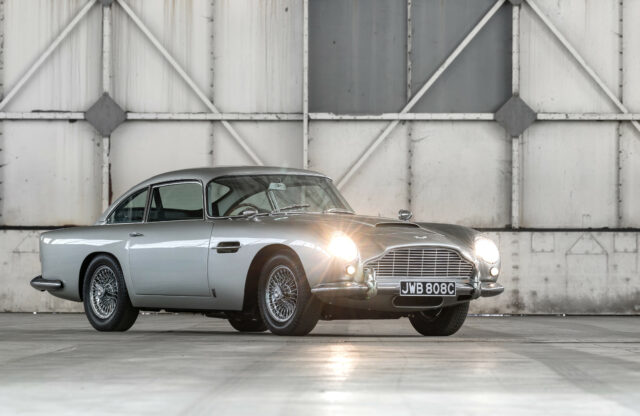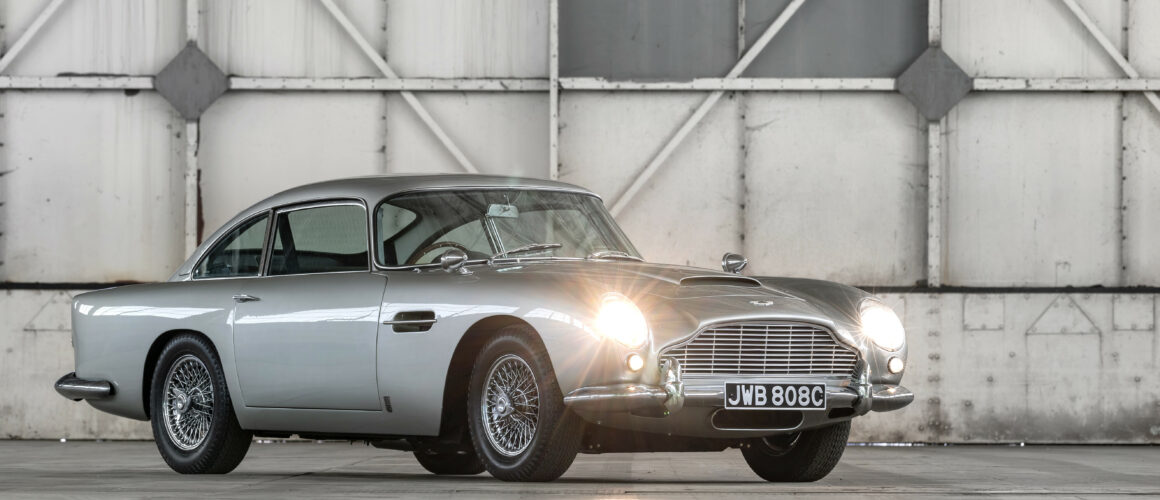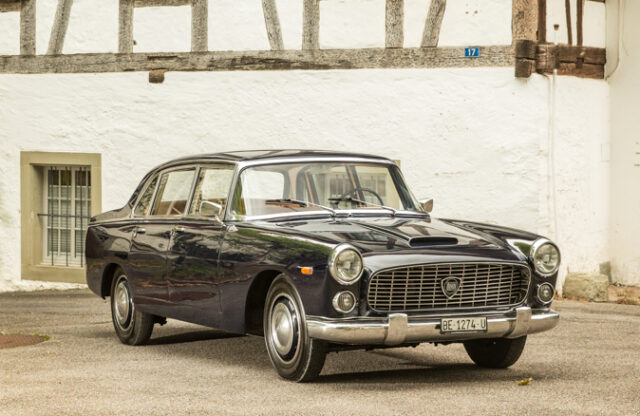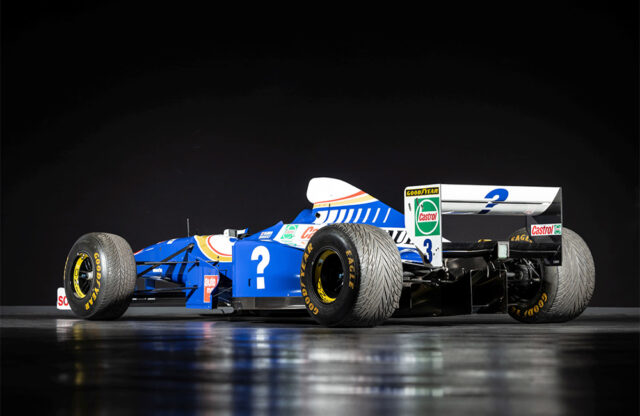Every long-running manufacturer has a model in its back catalogue with which most people identify. For Aston Martin, that car is undeniably the David Brown-era DB5 and its two similarly alluring sidekicks, the DB4 and DB6. Introduced in 1958, the DB4 was a quantum leap on from the DB2/4 models that preceded it. From the newly developed Tadek Marek 3.7-litre inline-six to the Italian Superleggera body-construction technique, this latest grand tourer was altogether a new kind of Aston.
The DB4 may have been marketed as a GT, but its on-track exploits in the hands of some of the period’s most celebrated drivers proved that this was far more than a soft boulevard cruiser. More powerful Vantage variants and drophead coupés were introduced, and a number of enhancements were developed during the relatively short production run – many of which were carried over to the DB5 when it arrived in 1963.
While the DB5 may have been visually similar to its forebear, detail enhancements under the skin helped keep it one step ahead of the competition. Most notably, the engine was bored out to 4.0 litres and triple carbs were now standard, the manual gearbox gained an extra ratio after the first few units were built, and the interior was more luxurious, too. Although production numbers for the DB4 and DB5 were both very similar (not much more than 1000 units each), the eye-watering values that the latter models command can in part be ascribed to the star factor garnered from being the favoured mode of transport for the world’s most recognisable ‘secret’ agent.
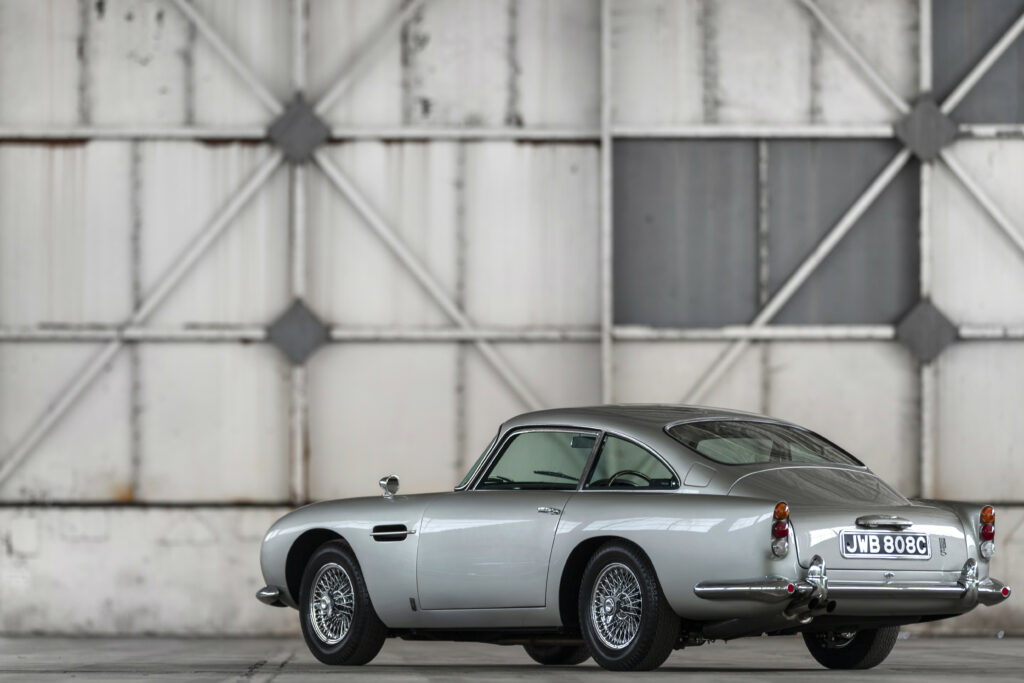
The DB6 took over in 1965, just two years after the DB5 was launched, and while it benefited from the incremental updates (and the no-cost option of the Vantage-specification engine), rivals such as Jaguar were now pulling ahead in key areas. The Superleggera construction technique made way for a more traditional body-on-frame structure, this design change being needed to accommodate the elongated tail that added high-speed stability. While the kerbweight was not much higher, the longer wheelbase and higher roofline did not look quite as resolved as on its DB5 predecessor.
The eventual introduction of standard power steering, optional air-conditioning and the additional rear passenger space clearly showed that the DB6 was embracing the grand-tourer philosophy wholeheartedly. Despite being produced in far greater numbers (1788 in total), these variants are often considered to be the least desirable of the three – but such things should be taken in context. Over 50 years have passed since the last DB6 rolled off the production line, and few people will be concerned about whether it matches up to its contemporary rivals in a drag race, or if it can corner with the same alacrity around a racetrack.
Viewed in a modern context, each DB variant boasts its own unique driving experience, with the earlier DB4s being more visceral and engaging, and the later DB6s having a more luxurious and relaxed demeanour. The DB5 offers a good balance of these two traits, while the Vantage versions of either model add a bit more power into the mix.
ENGINE
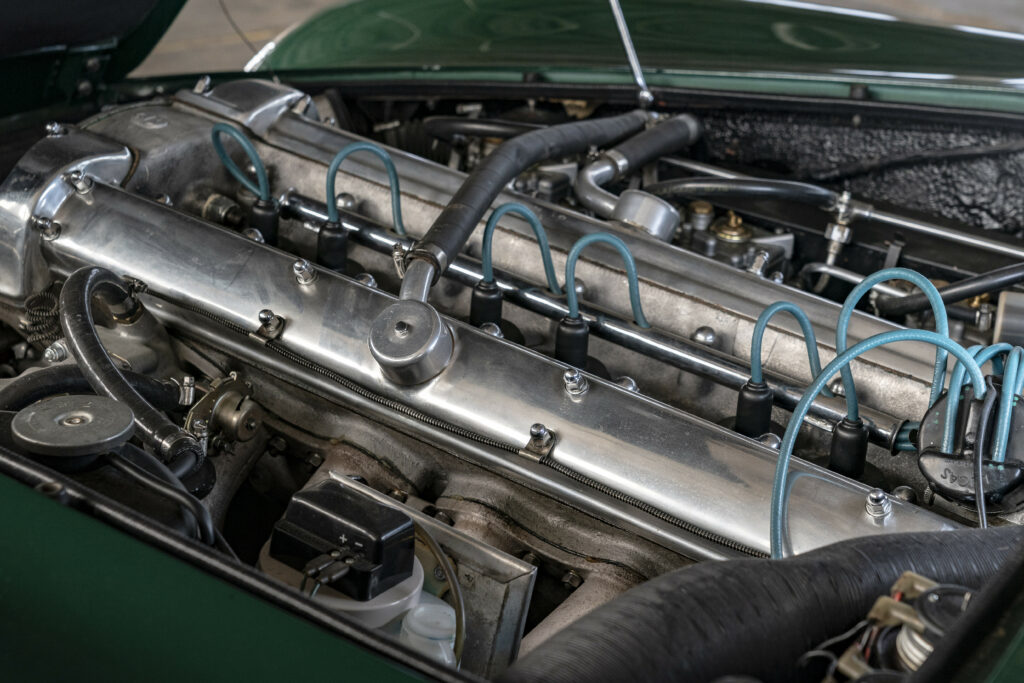
The basic inline-six motor design was used across all three DB models. The earlier 3.7-litre units in the DB4 were prone to overheating, and while improved oil cooling was introduced be sure to check for any signs of cracked heads and oil/water mixing in the radiator. The DB5 saw a capacity increase to 4.0 litres, and the DB6 used the same engine with the option to upgrade to the more powerful (but less tractable) Vantage-specification unit at no cost.
Desmond J Smail has been an Aston Martin specialist for over 40 years. He says checking the timing-chain condition by looking at the angle of the adjuster in the middle of the front of the head is important, as is replacement at 60,000 miles. He also suggests checking that the oil pressure is above 65º at 3000rpm once warm.
Twin SU carbs were first used, moving to triple SUs on the DB4 Vantage, DB5 and DB6. The higher-performance variants including the DB4 GT (which also had twin spark plugs) and later Vantage used triple Webers. A small batch of DB6s were offered with fuel injection, but many have been converted back to carbs. Many owners have modified their standard engines to Vantage spec, yet not all have the factory examples’ period-correct camshaft, larger valves and trio of Webers.
GEARBOX
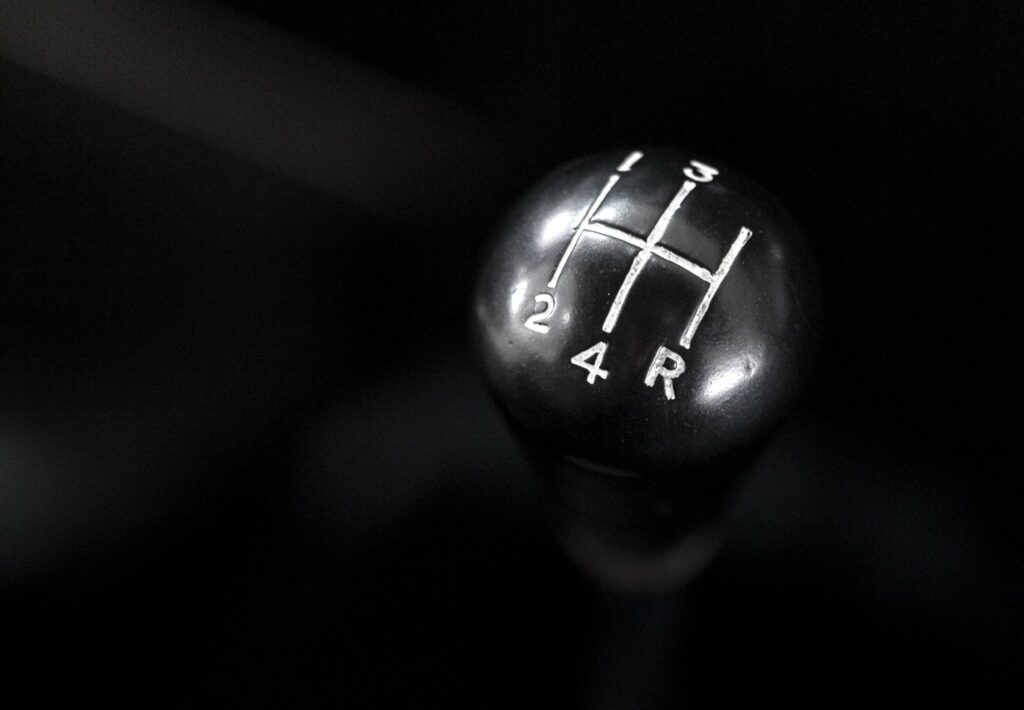
DB4s came fitted with a four-speed manual as standard, while a ZF-sourced five-speed unit was introduced early on in DB5 production. Both ’boxes need to be warmed up before they can give their best; a loose and sloppy lever or failure to stay in gear generally indicate excessive wear, and both layshaft bearings and synchros do eventually wear out. With a variety of differential ratios offered over the years, it is worth checking which one your potential purchase is fitted with.
A Borg-Warner three-speed automatic gearbox was offered as well. It was introduced late in DB4 production and then updated for the DB6, but it didn’t prove to be a popular option. These are robust units, but watch out for jerky or delayed gearchanges when on a test drive.
SUSPENSION AND BRAKES

The suspension set-up changed very little over the years. An independent system comprising all-round coil springs with ball-jointed wishbones up front and a live axle at the rear did duty across all three variants. Regular lubrication should keep the system in fine fettle; 2500-mile intervals are recommended, although with many cars taking years to cover this distance, seized dampers and perished rubber bushes are par for the course.
The DB4s were fitted with four-wheel Dunlop disc brakes, which were upgraded to a Girling set-up later in production. Crossply tyres were available very early on, but just about every car on the road today will have radials. Steering can be on the heavy side unless you have a DB6 fitted with power steering.
BODYWORK
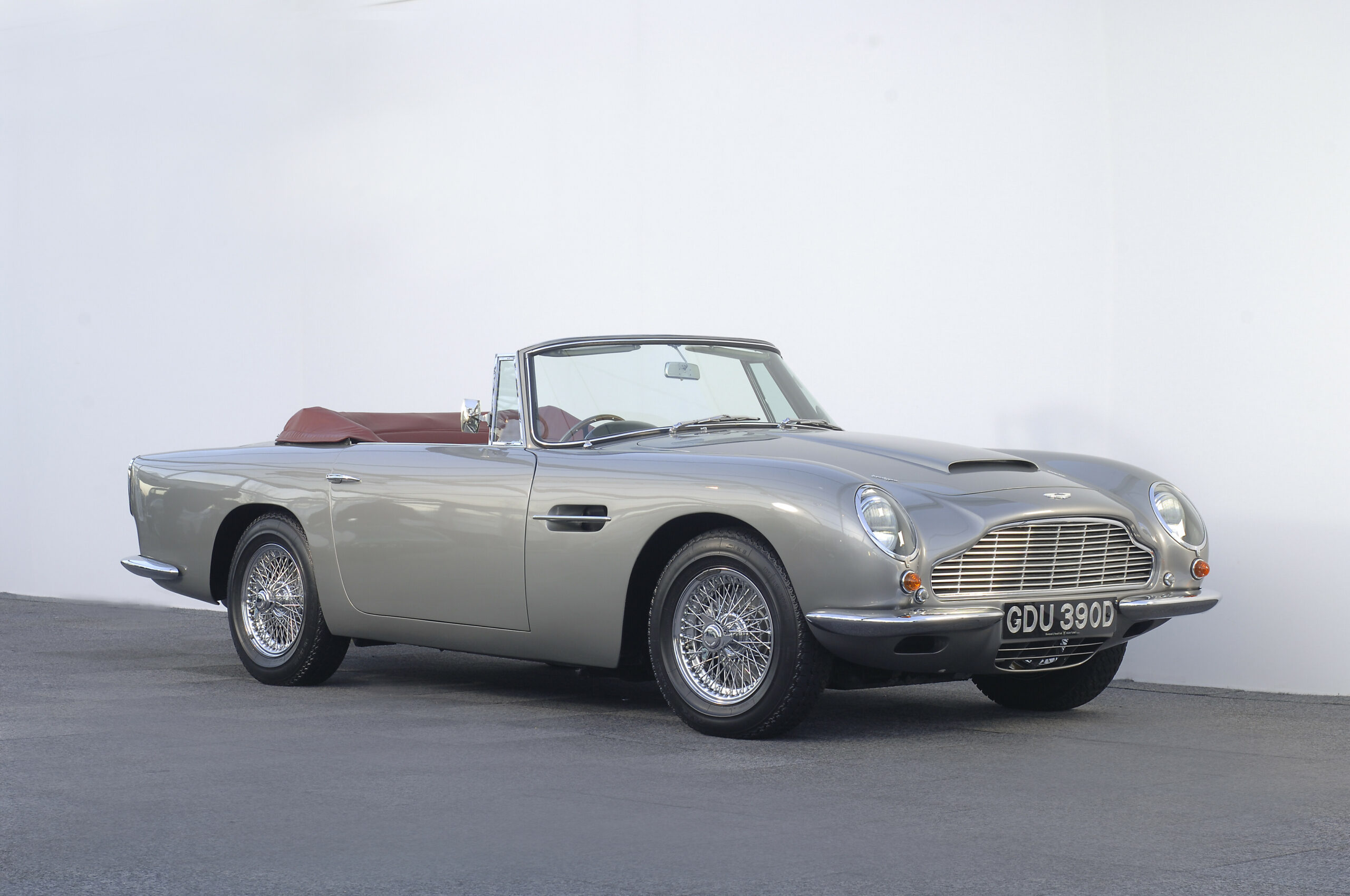
The DB4 and DB5 shared much in terms of their Superleggera tube-frame body construction. The rigid steel structure is clad in aluminium panels, providing a stiff but light structure. This complex layout can be the perfect breeding ground for rust and corrosion, especially in poorly repaired cars. Modern restoration techniques can often yield far better results than what the factory was capable of all those years ago, so take a long look in common rust-prone areas such as the arches, sills and boot floors.
When it came to the DB6, the model reverted to a more conventional body-on-frame construction, which was necessary to incorporate the new Kamm tail. While this layout is slightly less complex, rust is as much of an issue as before. Many cars have undergone some level of restoration, but not all of this work will be to the lofty standards you would expect, so it is highly recommended that you employ the services of a marque specialist to thoroughly examine any potential purchase.
INTERIOR
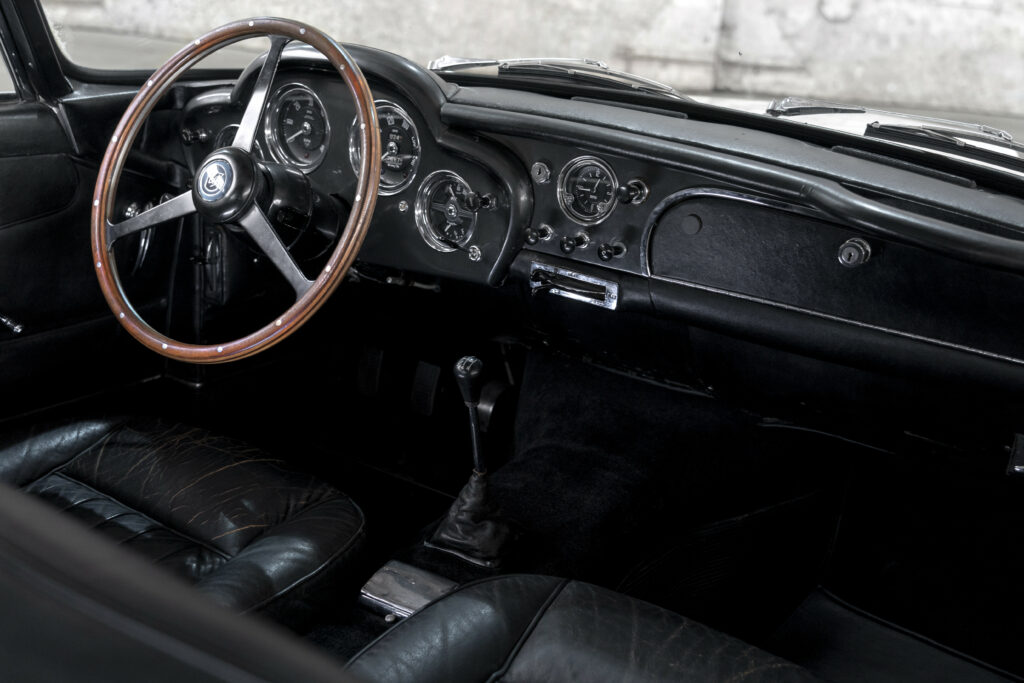
The interiors are a lesson in restrained elegance. Various luxuries were introduced over the years, but all upholstery and trim parts are relatively straightforward to restore – albeit at a price. Corroded connections and frayed wiring can dog the electronics. Slow power windows may simply need a mechanism clean, and if you have a later DB6s with optional air-con, check that all is in order.
WHICH ASTON MARTIN DB4, DB5 OR DB6 TO BUY
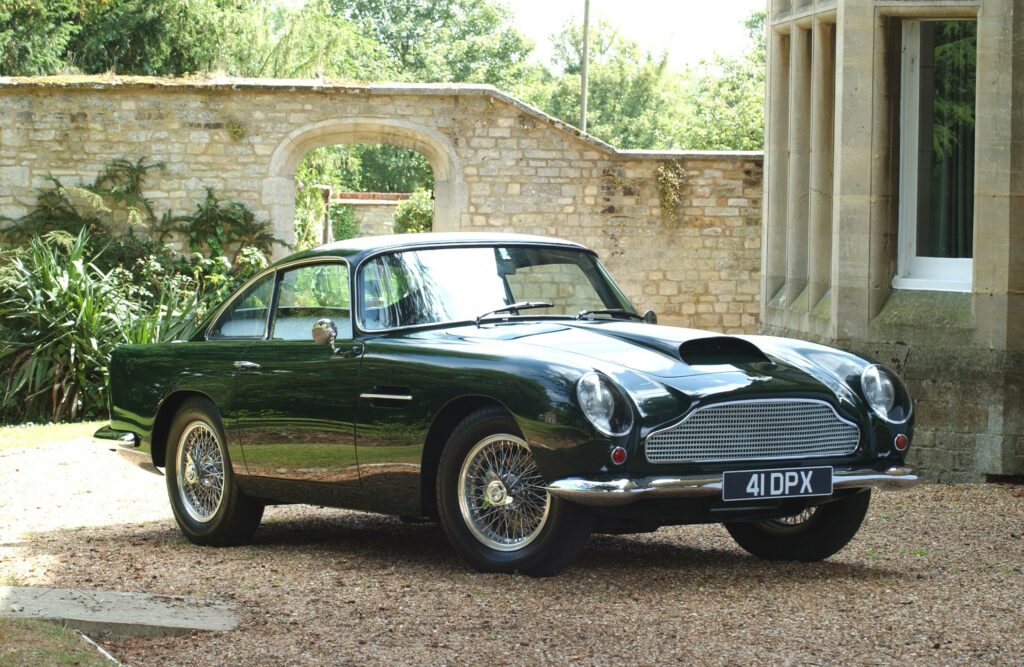
Spanning 13 years and numerous updates and modifications, the DB4, DB5 and DB6 range from two-seater, track-ready racers to civilised, four-seater motorway cruisers with all the luxury and style you could expect from a 1960s grand tourer. Recently revealed Continuations such as the DB4 GT Zagato and DB5 Goldfinger have helped introduce a new generation of fans to these special cars, and values are high across the board. Somewhat surprisingly, though, there are still a number of poorly maintained and unsympathetically restored examples. Service history is crucial here. Desmond reckons the best cars to buy are ones that have already been restored by a reputable specialist, and a full road-test report is always advisable. A proper restoration can cost £250,000-£350,000; factor this in if you’re looking for a project.
Matching-numbers models are highly regarded in the classic car world, but Desmond says this isn’t always the case here. In the 1960s, ’70s and ’80s owners were able to buy factory-rebuilt engines from Aston Martin, but no records were kept of the updated serial numbers.
DB5 prices are now well into the stratosphere, with the DB4 close behind. The more numerous DB6 still trails, but don’t expect to find a bargain; even a poor one will sell for £150,000. Desmond says the DB6 Mk2 Vantage and Volantes are among the best-sorted of all. Vantages command a premium over the standard cars, drophead coupés even more so, while specials such as the shooting brakes and Zagato DB4s have now hit seven figures.
Adding one of these Astons to your collection will give you instant access to the heady world of classic 1960s performance cars at the turn of a key. To many, this era was the marque’s finest.
Desmond J Smail and fellow specialist Nicholas Mee provided the technical details for this article. We recommend them for all your Aston Martin needs.
WHAT TO PAY
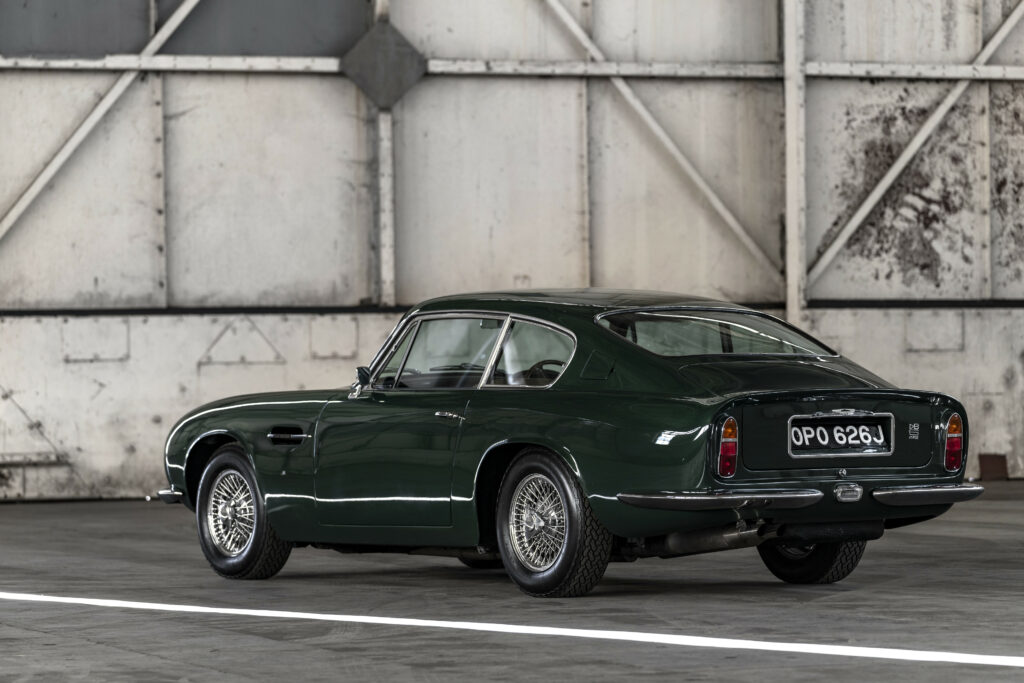
1964 DB5 4.0-litre base saloon, UK
Fair: £235,000
Good: £304,000
Excellent: £410,000
Concours: £539,000
1964 DB5 4.0-litre base saloon, US
Fair: $580,000
Good: $675,000
Excellent: $982,000
Concours: $1,350,000
SPECIFICATIONS
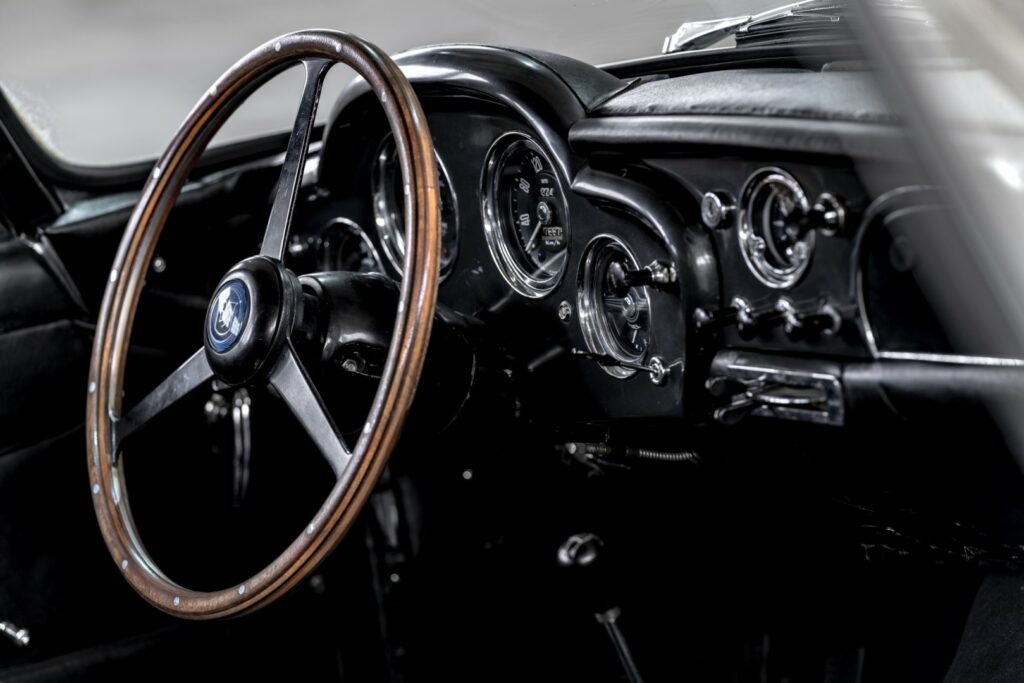
3.7-litre inline-six (DB4)
Power: 240bhp
Top speed: 140mph
0-60mph: 9.3 seconds
Economy: 17.7mpg
4.0-litre inline-six (DB5)
Power: 282bhp
Top speed: 145mph
0-60mph: 8.1 seconds
Economy: 15mpg (est)
4.0-litre inline-six (DB6 Vantage spec)
Power: 325bhp
Top speed: 155mph
0-60mph: 7.0 seconds
Economy: 15mpg (est)
